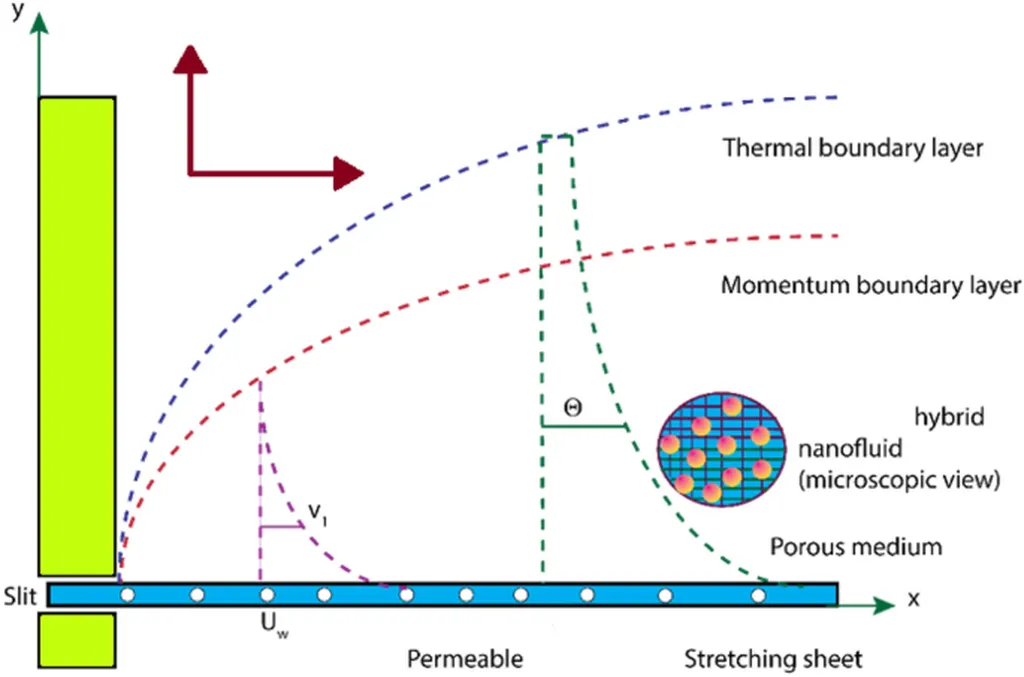In a significant stride towards enhancing energy applications, researchers have delved into the behavior of non-Newtonian hybrid nanofluids (HNF) over a porous stretching or shrinking Riga sheet. The study, led by Yasmin Humaira from the Department of Basic Sciences at King Faisal University in Saudi Arabia, explores the potential of these advanced fluids in various energy-related applications, from cooling systems to solar power generation.
The research, published in the journal “Open Physics” (which translates to “Otwarte Fizyki” in English), focuses on the flow dynamics of HNF composed of cerium oxide (CeO2) and aluminum oxide (Al2O3) nanoparticles. These fluids are known for their enhanced thermal properties, making them ideal for applications requiring efficient heat transfer.
“Non-Newtonian hybrid nanofluids offer a wide range of uses, particularly in energy-related fields,” Humaira explained. “Our study aims to understand their behavior under different conditions to optimize their use in practical applications.”
The team modeled the flow phenomena using nonlinear partial differential equations, which were then converted into dimension-free forms through similarity conversion. The solutions were obtained using the numerical approach parametric continuation method, and stability analysis was performed to ensure the reliability of the results.
One of the key findings of the study is the impact of the viscoelastic factor on the velocity field of HNF. The results showed that this factor enhances the velocity field for both types of non-Newtonian fluids—second-grade fluid and Walter’s B fluid—in the case of a stretching Riga sheet.
The study also compared its results with previously published studies, demonstrating a strong correlation. The relative error between the published and present study at a Prandtl number (Pr) of 10 was found to be 0.00046%, which gradually reduced to 0.00202% with the variation of Pr to 0.7.
The implications of this research are vast, particularly in the energy sector. Enhanced heat transportation and cooling systems can lead to more efficient and reliable energy storage and generation systems. The findings could also pave the way for advanced material synthesis and improved microfluidic devices.
As the world continues to seek sustainable and efficient energy solutions, the insights from this study could be instrumental in shaping future developments in the field. By understanding the behavior of non-Newtonian hybrid nanofluids, researchers can optimize their use in various applications, ultimately contributing to a more energy-efficient future.

